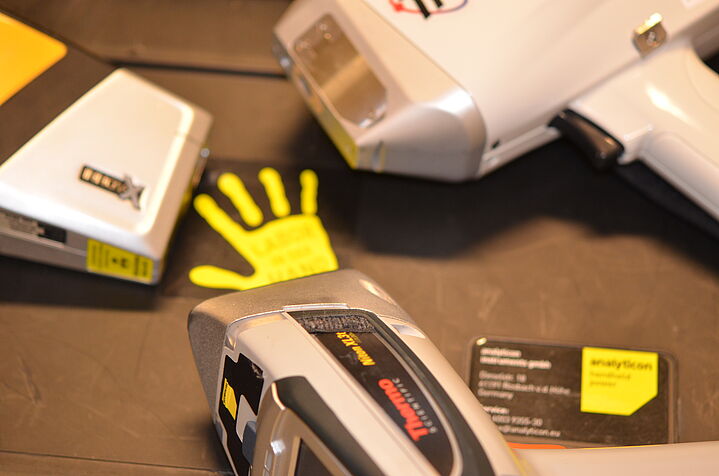p-XRF instrument performance studies
Measurements taken from December 2023 to February 2024
p-XRF instruments are available from various manufacturers such as Niton, Bruker, or Olympus. One focus of the project is therefore to understand whether instruments from different manufacturers behave similarly or differently. Are there patterns in terms of precision and accuracy that are consistent across all devices? Where does individuality begin? How do the devices perform under stress - for example, during long-term measurements or fluctuations in temperature and air pressure? What impact do collimators have on the values reported by the devices for known samples - is a 3mm collimator more suitable than an 8mm one? And what about when applying these results to archaeological ceramics - is the information obtained from standards transferable?
The first study involved an intensive measurement campaign on standards:
- measurements are completed to determine the precision of three different instruments, the effects of temperature drift and the optimal measurement time.
- A total of 7 standards were measured more than 40 times each with three different instruments in various ways by changing parameters such as collimator and sample movement.
Now it is time to analyse the data!


